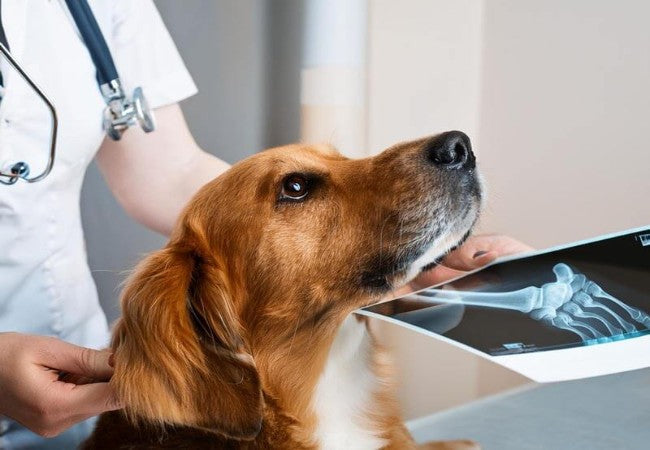Veterinary Guide to Hyperkalemia in Dogs (High Potassium) 2025 🐶

In this article
Veterinary Guide to Hyperkalemia in Dogs (High Potassium) 2025 🐶
By Dr. Duncan Houston BVSc
🔍 Introduction
Ptyalism, or excessive drooling, is common in dogs—but when it’s sudden, severe, or abnormal for the breed, it may signal illness. This 2025 guide explains when drooling is normal, when to worry, and how to diagnose and manage underlying causes. 🩺
💡 Normal vs. Excessive Drooling
- Breed matter: dogs with saggy jowls (Saint Bernards, Mastiffs, Bloodhounds, Newfoundlands) are naturally droolier.
- Physiological drooling: occurs during eating, anticipation of food, hot weather, and excitement.
- Excessive drooling = more saliva than the dog can swallow, with or without other symptoms; this is termed ptyalism or hypersalivation.
⚠️ When to Take Action
Seek veterinary attention if drooling is:
- New or significantly increased for your dog
- Sudden and accompanied by vomiting, weakness, pawing at mouth, facial swelling, difficulty swallowing, behavior change, GI upset, or fever
- One-sided (may indicate injury, a tumor, or foreign object)
- Associated with heatstroke signs or exposure to toxins
- In large, deep-chested breeds, sudden drooling may signal bloat/GDV—an emergency.
🔬 Underlying Causes
Drooling can stem from increased saliva production or impaired swallowing:
Excess saliva (hyper‑) secretion:
- Oral irritation—ulcers, stomatitis; dental issues—gum disease, decayed/fractured teeth
- Salivary gland inflammation, sialadenitis, or tumors
- Nausea from GI upset—vomiting, motion sickness, gastritis, pancreatitis, liver/kidney disease
- Toxins—plants, cleaning agents, insecticides, chemical ingestion, rabies, tetanus
- Anxiety/stress-related drooling (e.g., during travel).
Pseudoptyalism (swallowing issues):
- Oral obstructions—foreign bodies (sticks, bones), tumors, ulceration
- Esophageal problems—megaesophagus, reflux, strictures
- Neurological/facial nerve damage, dysphagia due to neuromuscular or central disorders.
🩺 Diagnostic Approach
- Full oral exam, sedation if needed; palpation of neck, pharynx, esophagus
- Medical history—onset, diet, toxin exposure, medications, behavioral triggers
- Diagnostic tests—bloodwork, urinalysis, dental X‑rays, abdominal/chest imaging
- Advanced diagnostics (endoscopy, CT, biopsy) for tumors, severe esophageal issues.
🛠 Treatment & Management
- Dental care: cleanings, extractions, treat ulcers and stomatitis
- Remove foreign objects or tumors: via surgery or endoscopy
- Treat underlying GI illness: antiemetics, ulcer therapy, diet change, pancreatitis/liver support
- Manage toxins: decontamination, activated charcoal, supportive care
- Address neurological issues: treat nerve damage, manage seizure disorders
- Anxiety support: anti-nausea meds during travel, behavior training, calming aids
- Supportive care: hydration, wound care for drool-caused dermatitis, clean bowls and chin folds.
📅 Prognosis & Follow-Up
- If the root cause is treated early, prognosis is often excellent;
- Chronic issues (neurological, neoplastic, GI disease) may require ongoing care;
- Regular dental exams, breed-appropriate drool prevention, and toxin avoidance help prevent recurrence;
- Owner records (drool logs, symptom tracking) aid in early detection of chronic issues.
🛡 Prevention & Home Care
- Maintain oral health: daily brushing, vet cleanings;
- Remove hazardous items/toxins from reach;
- Prevent motion sickness—gradual car training, anti-nausea support;
- Use breathable bandanas to reduce skin irritation for drooly breeds;
- Monitor for sudden changes—even in drooly breeds—as changes indicate issues.
🔧 Tools & Services
- Ask A Vet App: 24/7 support for drooling episodes, advice for when to seek care 🧬
✅ Final Thoughts
While drooling is normal for many breeds or during mealtimes, sudden or excessive ptyalism often points to a medical concern. Through thorough exam, diagnostics, and targeted treatment, most dogs recover well. Regular oral hygiene, home monitoring, and use of supportive tools like Ask A Vet, Woopf, and Purrz will help catch issues early and maintain wellness in 2025 and beyond. 🐾❤️
Download the Ask A Vet app today for immediate expert guidance on excessive drooling events, symptom tracking, and treatment advice. 📱💡






